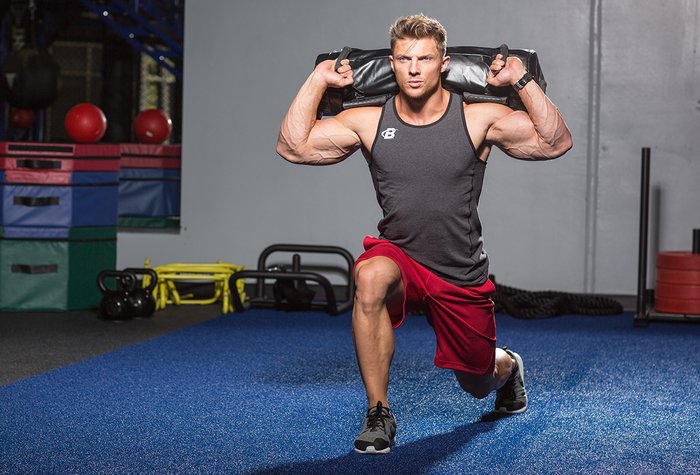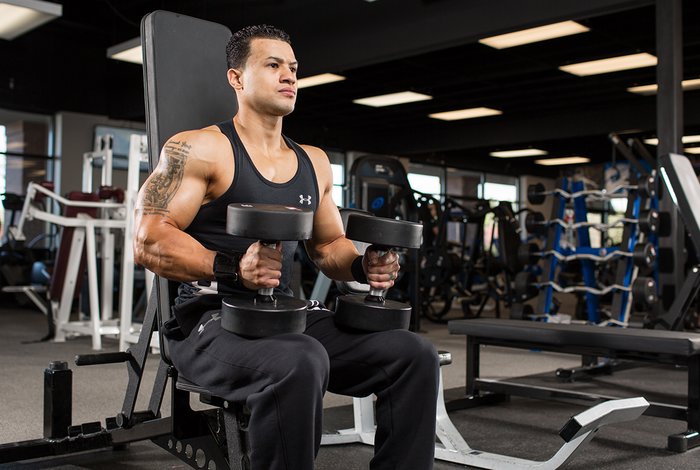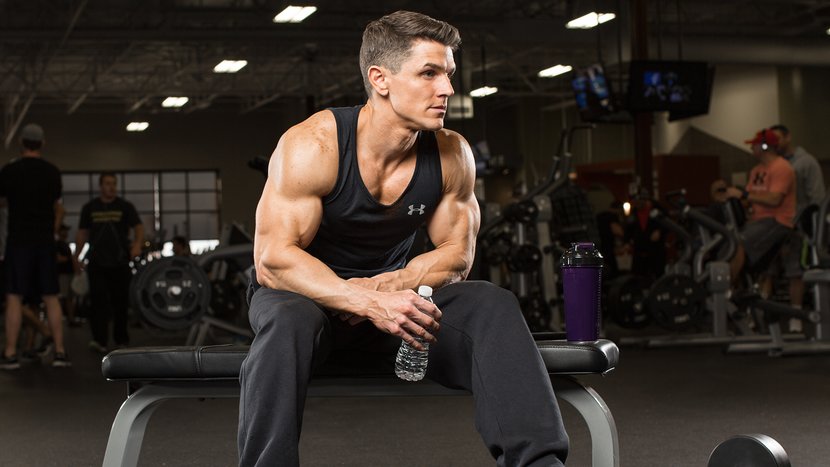Our community has voted on what the optimal time between sets is for muscle growth. Here are the results according to real life experience and real results!
The Question: How long should you wait between sets? Should you try to spend only a few seconds between sets to fully work the muscle and increase the “burn”, or should you wait longer until your muscles have fully recovered from the last set?
Which way is best to increase growth? Should you ever change the amount of time between sets over time, or stick to one, proven method?
Bonus Question: Have you ever used one of those “intense” workouts with absolutely minimal amount of time between sets just to try to break a plateau or try something different? Something like doing 10 sets of squats with only 15 seconds between sets, until you are on the verge of puking? If so, what was the workout exactly? How often should you do it? Did it help your overall gains?
How Much Rest Is Best?
The “best” amount of time to rest between sets, like most things in bodybuilding, depends on what specific goal you’re training for.
Do you want to be stronger, more muscular or increase your stamina? Common sense and research tells us that we can only pursue one goal at a time.
If we want to be stronger, we should follow a training program that increases our strength as quickly as possible. Likewise for size and stamina. Not surprisingly, with each specialized program comes a different requirement for rest periods.
Let’s look at WHAT those different rest periods are and, most importantly, explore WHY they are.
Strength Training
To get stronger faster, the best rest period is 3 to 5 minutes between sets.
This is because much of the energy your body consumes during traditional strength training (heavy weight, 1 to 6 reps) comes from the Adenosine Triphosphate Phosphocreatine system. The ATP-PC system uses phosphagens to produce energy very quickly and without the use of oxygen. Your body has a very small phosphagen reserve, which lasts about 15 seconds. It takes your body about 3 minutes to fully replenish phosphagen stores (Fleck, 1983).
In other words, if you give your ATP-PC system at least 3 minutes to recharge, you’ll lift more weight and get stronger faster.

In one study, athletes lifted a weight more times in 3 sets after resting 3 minutes compared to when they rested only 1 minute (Kraemer, 1997). Another study showed a 7% increase in squat strength after 5 weeks of training with 3 minute rest periods.
The group that rested for 30 seconds only improved their squat by 2% (Robinson et al, 1995). Two more studies that examined very short rest periods (30 to 40 seconds) found they caused nowhere near the strength gains from longer rest periods (Kraemer et al, 1987; Kraemer, 1997).
You’ll cool down too much if you rest longer than 5 minutes. No-one wants to increase their chances of injury.
Hypertrophy Training
To get bigger quicker, the best rest period is 1 to 2 minutes between sets.
Typical bodybuilding/hypertrophy training (moderate-heavy weight, 6-12 reps) draws energy from the ATP-PC and glycolytic system (the glycolytic system gets most of its energy from the carbs you eat). The aerobic metabolism plays a very small part as well.
Think of the ATP-PC system as a racehorse and the glycolytic system as a steady, dependable Clydesdale. Because your glycolytic system has come to the party, your body doesn’t need to rest as long between sets as when you’re strength training.
Bodybuilders take advantage of shorter rest periods to make their muscles BIGGER. How? Well, one of the key factors in how much muscles grow is the amount of anabolic hormones your body produces after weight training (McCall et al, 1999). Short rest periods of between 1 and 2 minutes cause a greater release of these hormones than longer rest periods (Kraemer et al, 1991; Kraemer et al, 1990).
Short rest periods also cause other muscle-building bonuses like increased lactate production and blood flow to the targeted muscles (Kraemer, 1997; Kraemer et al, 1987). Don’t laugh about the blood flow bit. I know it sounds like old-school “pump” talk. But it’s been shown that the increased blood flow to your muscles helps the protein get there quicker (Biolo et al, 1995).
Muscle fatigue, caused by lactate production, has also been implicated in short-term strength gains and significant hypertrophy (Rooney et al, 1994).
Endurance Training
To increase muscular endurance as quickly as possible, the best rest period is 45 seconds to 2 minutes between sets.

Classic endurance training (light-moderate weight, 15-20 reps) draws much of its energy from aerobic metabolism. This means your body burns carbs and fats in the presence of oxygen.
Basically, endurance training is aimed at making your muscles more resistant to fatigue. Without going into complicated details, a major cause of fatigue in endurance activities is lactic acid build-up. Regularly lifting weights in a 15-20RM makes your body more efficient at clearing lactic acid from the muscles by boosting your body’s hormonal and vascular systems (Donovan & Brooks, 1983).
Coaches from a variety of endurance-related sports usually recommend a 1:1 or 1:2 work-rest interval to increase your body’s lactate threshold (Sleamaker & Browning, Winbourne, 1998, Horswill, 1992). A strict set of 15 to 20 reps should take you between 45 seconds and 1 minute to complete… which works out to a rest period of between 45 seconds and 2 minutes.
And here’s a final interesting fact: bodybuilders (who train with short rest periods and high reps) are more fatigue-resistant than powerlifters (long rest, low reps)(Kraemer, 1987). Bodybuilders are better at clearing lactic acid.
Bonus Question
I’ve done a number of things over the years to crank up training intensity. Strips sets, endurance training…all things that require you to rest for short periods of time (or not rest at all!).
But the most intense “short rest” workout I’ve ever done was Bahlow Circuit Training… I almost barfed. And let’s not forget….barfing is actually a BAD thing and not something you ever want to do after a workout.
BCT is not for the faint hearted. It requires bucketloads of protein and many hours of sleep afterwards. I did BCT for six weeks and made newbie-like gains… but it’s hard, hard work.
BCT is basically a giant circuit of supersets. Make that super-supersets. You have three exercises per bodypart that you do in a row without rest. The exercises start hard and end with an “easier” movement. Here’s an example using the leg superset:
- Squats x 10 Stiff-legged deadlift x 10 Leg press x 10
You work out your 10RM on each exercise BEFORE you do the circuit. That’s bad. Because by the time you’ve done squats and deadlifts without a break, your 10RM on leg press feels like a 5 rep max. And you’re expected to crank out 10.
Bodyparts worked are legs, chest, back, shoulders and arms. You get a two minute rest between each megaset. TWO MINUTES!!. You do 3 circuits.
First time I did BCT I was on the floor afterwards. Looking at the bright lights. It’s the closest I have ever come to barfing after a workout.


